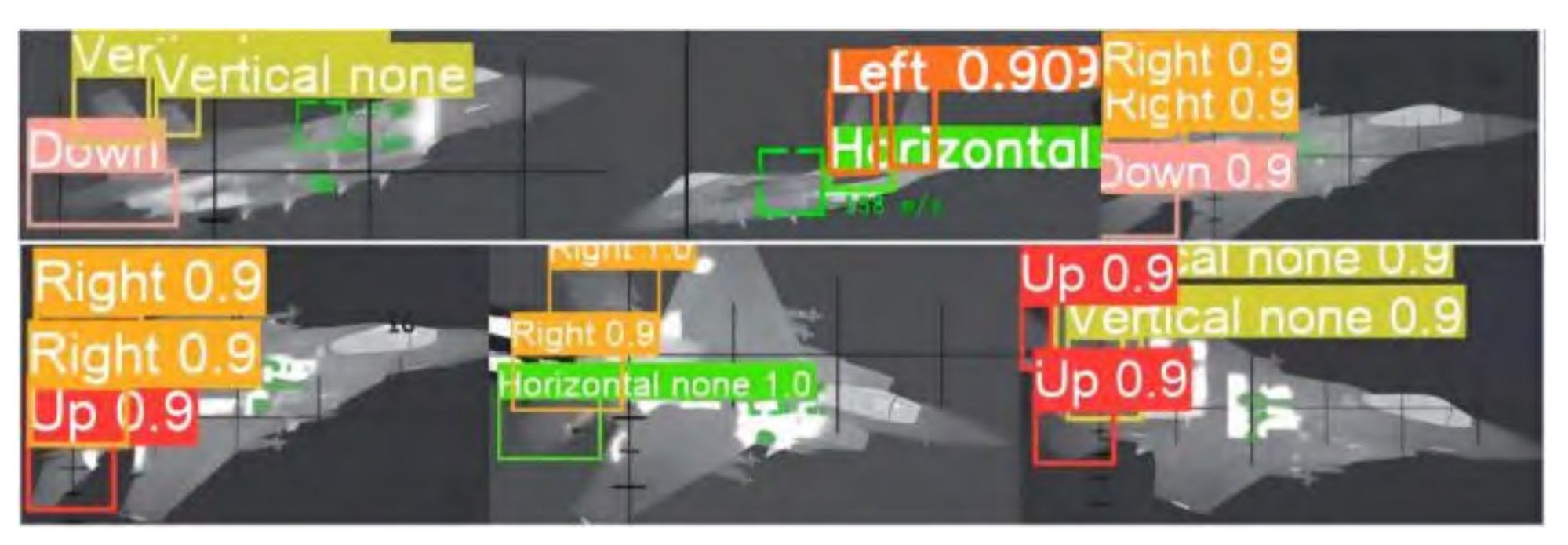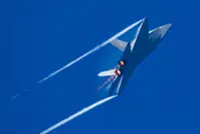In a breakthrough set to reshape the future of air combat, Chinese researchers claim to have nullified humanity’s final tactical advantage over artificial intelligence (AI) in dogfights: the ability to outmanoeuvre algorithms through unpredictable, high-intensity aerial acrobatics.
Detailed in a study published late last year, the method combines advanced infrared imaging with AI-driven predictive modelling to anticipate an opponent’s moves by detecting subtle wing-tail movements.
It is a development that could render even the most agile fighter jets – such as the US-made F-15 – virtually defenceless, according to the team of scientists from the Northwest Institute of Mechanical & Electrical Engineering, based in the northwest city of Xianyang, which is a key research arm of Norinco, China’s biggest arms supplier.
Do you have questions about the biggest topics and trends from around the world? Get the answers with SCMP Knowledge, our new platform of curated content with explainers, FAQs, analyses and infographics brought to you by our award-winning team.
Published in the December issue of Journal of Gun Launch & Control, the study addresses a critical flaw in existing AI air combat systems: their reliance on trajectory-based predictions, which struggle to account for sudden, non-linear manoeuvres executed by human pilots.
The Chinese team, led by senior engineer Lin Zhiwei, bypassed this limitation by focusing on the physical mechanics of enemy aircraft.
Using a modified YOLOv8 neural network, the system analyses infrared imagery to detect millimetre-level deformations in an opponent’s control surfaces – such as the F-15’s 1.5-metre (five-foot) rudder or two-metre (6.5-foot) elevator – during flight.
These real-time observations feed into a long short-term memory (LSTM) network improved with attention-weighing mechanisms, enabling the AI to predict manoeuvres before they fully unfold.
In simulations, the system reduced targeting errors to under two metres, a tenfold improvement over traditional prediction methods. When applied to automated anti-aircraft systems, such precision could allow shells to strike the cockpit if necessary.

“Human pilots rely on instinct and unpredictability, but every physical manoeuvre has mechanical precursors,” Lin and his colleagues wrote in the paper.
By decoding these signs – a rudder tilt, an elevator shift – the new model resolves the “black box” of human decision-making, they said.
The team tested their AI against some high-difficulty flight profiles mimicking real-world tactics.
In one simulated combat, an F-15 released munitions at low altitude then ascended sharply – a manoeuvre requiring precise coordination of control surfaces.
In another, the jet made rapid, erratic jinking and diving to evade fire, marked by violent control-surface adjustments.
In both scenarios, the AI reportedly anticipated trajectory shifts within milliseconds of detecting control-surface movements, leaving no window for evasion.
The breakthrough arrives amid a global AI arms race in aerial combat. In 2020, the US Defence Advanced Research Projects Agency AlphaDogfight Trials showed AI’s superiority in scripted simulations, and the AI took part in real-world dogfights in a test for the first time last year.
The Chinese team stressed that their system’s role was in fire-control optimisation rather than fully autonomous strikes. However, its principles align with global projects like the US Air Force’s “loyal wingman” drones, which pair AI-driven craft with manned fighters.
The study validates its approach using existing hardware, such as China’s PS800 infrared sensor, which achieves the required 0.375-milliradian resolution at 8km (five-mile) distances.
Yet challenges persist. Adversaries could employ countermeasures such as high-powered lasers to blind or even destroy the camera.
More from South China Morning Post:
- China arms combat robots with controversial thermobaric weapon in urban warfare drill
- Hong Kong to launch 2 AI forums aimed at bridging China and the world amid US tech war
- Chinese military unveils new data unit to help naval commanders make decisions
- South Korea’s annual military drill with US to go on, AI models to be deployed
- Chinese scientists build world’s most powerful spy camera
For the latest news from the South China Morning Post download our mobile app. Copyright 2025.





